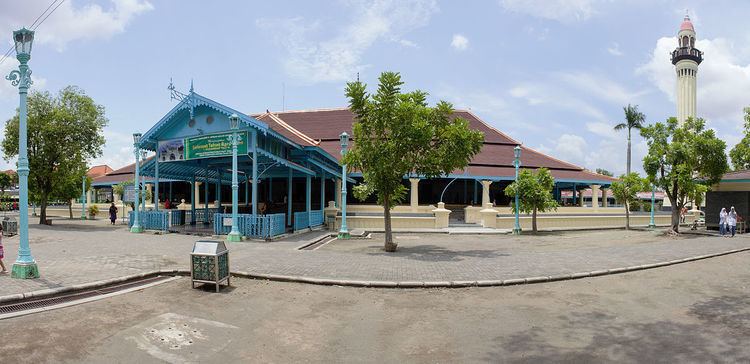Direction of façade East | Status Active Completed 1768 Opened 1768 Number of minarets 1 Groundbreaking 1763 | |
 | ||
Similar Surakarta Hadiningrat Palace, Demak Great Mosque, Masjid Bingkudu, Masjid Raya Koto Baru, Mesjid Raya Andalas | ||
Solo bushcraft camp 2 nights in the snow natural shelter minimal gear
The Great Mosque of Surakarta (Indonesian Masjid Agung Surakarta, Javanese Masjid Ageng Karaton Surakarta Hadiningrat) is an 18th-century Javanese mosque in Surakarta, Central Java, Indonesia. It is the royal mosque of the Surakarta Sunanate.
Contents
- Solo bushcraft camp 2 nights in the snow natural shelter minimal gear
- History
- The mosque
- The vicinity
- References
History
The Great Mosque of Surakarta was built by Sunan Pakubuwono III in 1763. The mosque was completed in 1768. The mosque was both a jami mosque (mosque for Friday prayer) and royal mosque (mosque for ceremonies or rituals related with the royal). Traditionally, the mosque also served as a judiciary in matters of religious significance.
The fence was added for the mosque complex in 1858 during the reign of Sunan Pakubuwono VIII. A Mughal architecture-inspired minaret was built in 1928 during the reign of Sunan Pakubuwono XI.
The mosque
Surakarta Great Mosque is located within a 19,180 sqm complex surrounded by a solid wall. The design of the Great Mosque of Surakarta follows a conservative Javanese architecture principle. It basically consists of two buildings: the main prayer hall and the front hall (serambi). The main prayer hall has seven doors connecting it with the serambi. Four main posts (Javanese saka guru) supported the roof of the main prayer hall. This roof is a pyramidal tajug-styled roof, a type of roof traditionally reserved for sacred buildings in Javanese architectural principle. The roof is three-tiered, topped with a mustaka (rooftop ornament). As a royal mosque, there is a maksura to the left of the mihrab. A maksura is a place for the ruler of the kraton to perform prayer. In case of the Great Mosque of Surakarta, the maksura has a small hip roof.
In front of the main prayer hall is the front hall, known as the serambi. The serambi is basically a porch-like structure semi-attached to the front facade of the main prayer hall. The serambi kept two bedugs (Javanese drum to call prayer) and a large wooden kentongan. Another porch-like semi-attached buildings flanked the main prayer hall to its left and right, this is called the pawestren. The pawestren is used as women's praying room.
The minaret was located to the northeast of the mosque. The design is based on Qutb Minar of Delhi.
The vicinity
Following the traditional Javanese city planning, the mosque is located facing the northern alun-alun of the kraton of the Kasunanan of Surakarta. To the south of the mosque is the Pasar Klewer ("Klewer Market"). The traditional kampung of Kauman, known for its batik craftsmanship, is located north of the Great Mosque.
